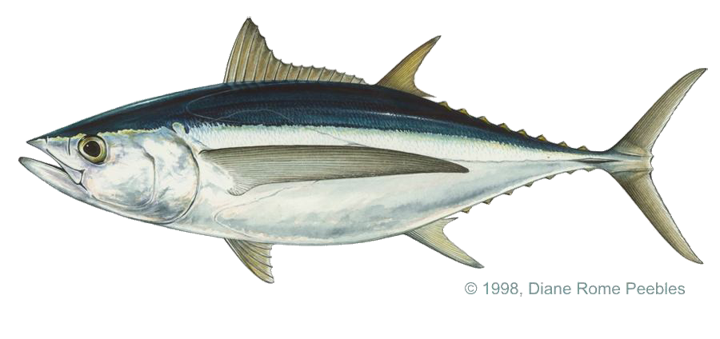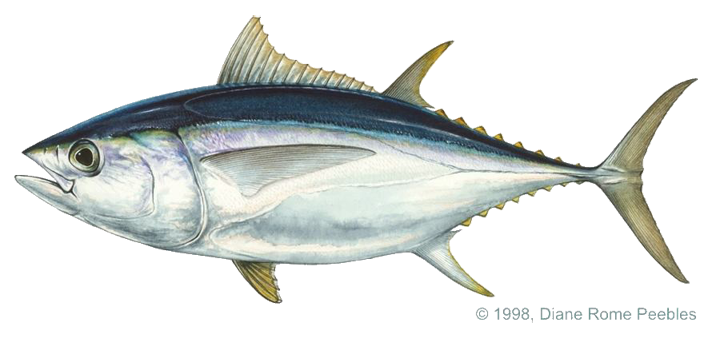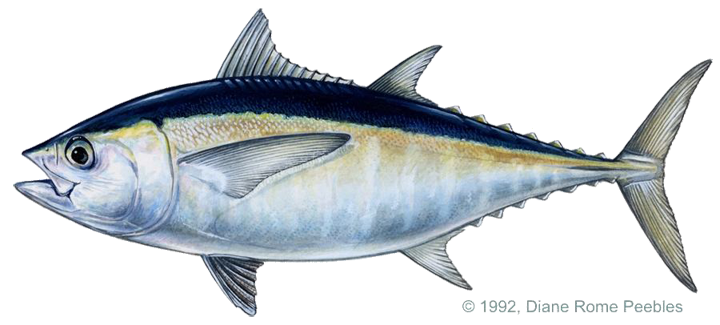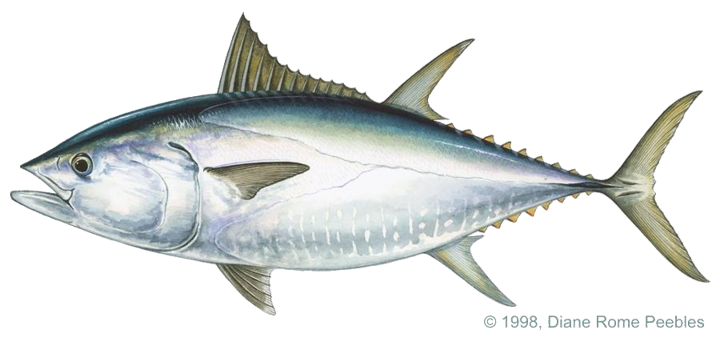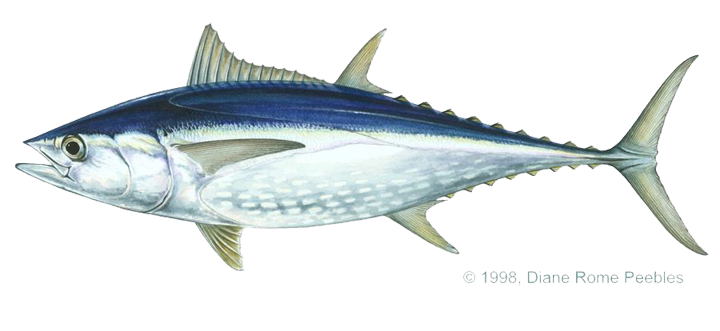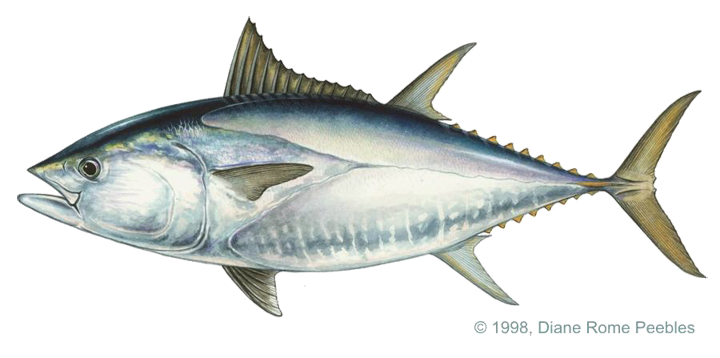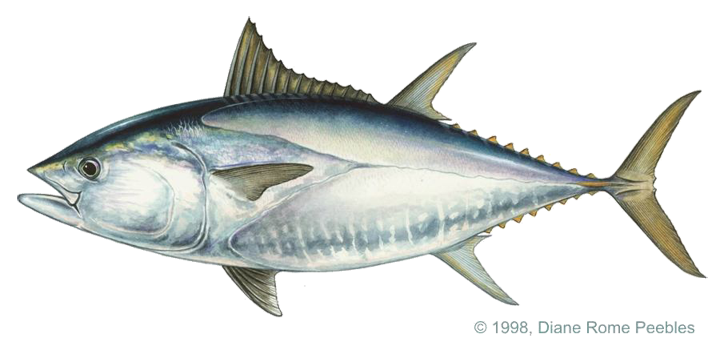Game Fish Identification Reference Guides
Tuna, yellowfin
(Thunnus albacares)
(Thunnus albacares)
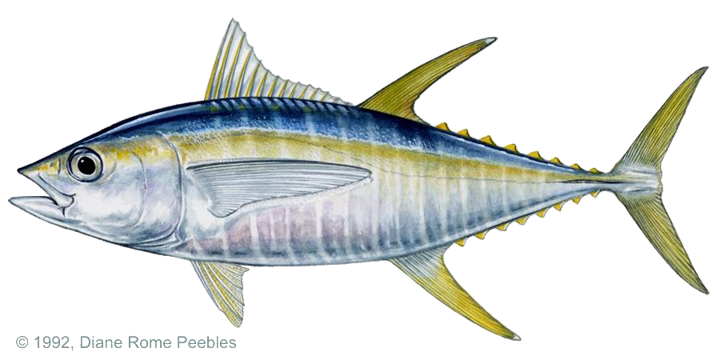
(Bonnaterre, 1788); SCOMBRIDAE FAMILY; also called Allison tuna
Occurs worldwide in deep, warm temperate oceanic waters. It is both pelagic and seasonally migratory, but has been known to come fairly close to shore.
Most large yellowfins have overextended second dorsal and anal fins that may reach more than halfway back to the tail base in some large specimens. In smaller specimens under about 60 lb (27 kg) and in some very large specimens as well, this may not be an accurate distinguishing factor since the fins do not appear to be as long in all specimens. The pectoral fins in adults reach to the origin of the second dorsal fin, but never beyond the second dorsal fin to the finlets as in the albacore. The bigeye tuna (T. obesus) and the blackfin tuna (T. atlanticus) may have pectoral fins similar in length to those of the yellowfin. The yellowfin can be distinguished from the blackfin by the black margins on its finlets. Blackfin tuna, like albacore, have white margins on the finlets. It can be distinguished from the bigeye tuna by the lack of striations on the ventral surface of the liver.
This is probably the most colorful of all the tunas. The back is blue black, fading to silver on the lower flanks and belly. A golden yellow or iridescent blue stripe runs from the eye to the tail, though this is not always prominent. All the fins and finlets are golden yellow though in some very large specimens the elongated dorsal and anal fins may be silver edged with yellow. The finlets have black edges. The belly frequently shows as many as 20 vertical rows of whitish spots.
The diet depends largely on local abundance, and includes flying fish, other small fish, squid and crustaceans. Fishing methods include trolling with small fish, squid, or other trolled baits including strip baits and artificial lures as well as chumming with live bait fishing.
It is highly esteemed both as a sport fish and as table fare. Its flesh is very light compared to that of other tunas, with the exception of the albacore, which has white meat
Occurs worldwide in deep, warm temperate oceanic waters. It is both pelagic and seasonally migratory, but has been known to come fairly close to shore.
Most large yellowfins have overextended second dorsal and anal fins that may reach more than halfway back to the tail base in some large specimens. In smaller specimens under about 60 lb (27 kg) and in some very large specimens as well, this may not be an accurate distinguishing factor since the fins do not appear to be as long in all specimens. The pectoral fins in adults reach to the origin of the second dorsal fin, but never beyond the second dorsal fin to the finlets as in the albacore. The bigeye tuna (T. obesus) and the blackfin tuna (T. atlanticus) may have pectoral fins similar in length to those of the yellowfin. The yellowfin can be distinguished from the blackfin by the black margins on its finlets. Blackfin tuna, like albacore, have white margins on the finlets. It can be distinguished from the bigeye tuna by the lack of striations on the ventral surface of the liver.
This is probably the most colorful of all the tunas. The back is blue black, fading to silver on the lower flanks and belly. A golden yellow or iridescent blue stripe runs from the eye to the tail, though this is not always prominent. All the fins and finlets are golden yellow though in some very large specimens the elongated dorsal and anal fins may be silver edged with yellow. The finlets have black edges. The belly frequently shows as many as 20 vertical rows of whitish spots.
The diet depends largely on local abundance, and includes flying fish, other small fish, squid and crustaceans. Fishing methods include trolling with small fish, squid, or other trolled baits including strip baits and artificial lures as well as chumming with live bait fishing.
It is highly esteemed both as a sport fish and as table fare. Its flesh is very light compared to that of other tunas, with the exception of the albacore, which has white meat













